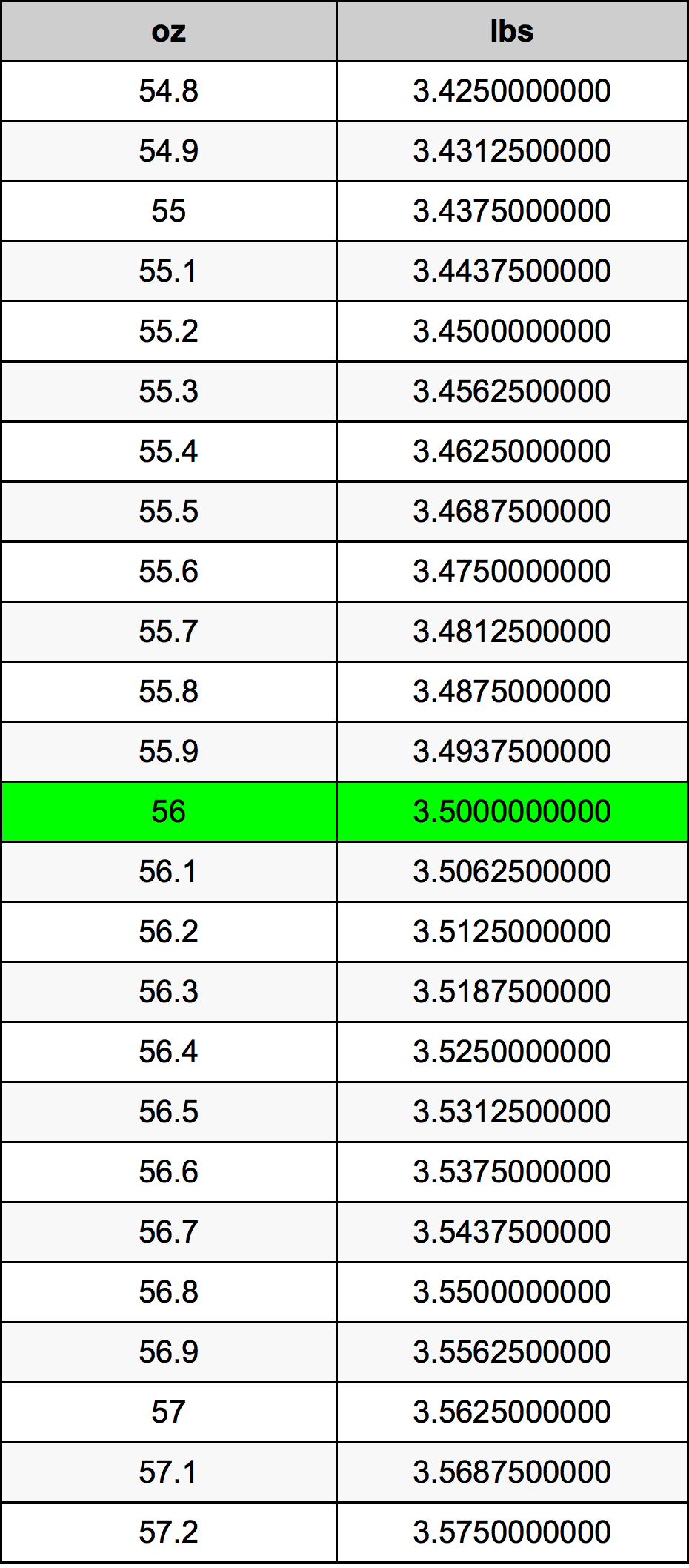When it comes to measurements in everyday life, understanding conversions can be pivotal for tasks ranging from cooking to health monitoring. One such measurement is 56 ounces. But how much is this quantity when translated into different measurement systems? This article delves into the nuances of 56 ounces, breaking it down into easily digestible segments that provide clarity for a diverse audience.
To begin with, 56 ounces is equivalent to 3.5 pounds. This conversion serves as a fundamental reference point. Knowing that there are 16 ounces in a pound, the math becomes straightforward. By dividing 56 by 16, one uncovers the number of pounds, yielding that 56 ounces is indeed 3.5 pounds. This information is particularly relevant in contexts like dieting, where one may be tracking weight loss or gain.
For culinary enthusiasts, understanding ounces is crucial for precise measurements. In cooking, 56 ounces is a sizable amount of liquid—specifically, it equals 7 cups. This is significant information for recipes that require exact measurements, especially when preparing larger batches of food or beverages for gatherings. For instance, if a recipe calls for 7 cups of broth, knowing that you need to measure out 56 ounces streamlines the cooking process.
Exploring further, let us delve into the metric system. In metric terms, 56 ounces converts to approximately 1.6 liters. The metric system is utilized worldwide and is particularly useful for those in scientific and international contexts. For comparison, a standard water bottle is typically around 0.5 liters (or 16.9 ounces); thus, 56 ounces equates to about three of those bottles. Understanding this conversion aids in grasping hydration needs or while evaluating liquid consumption during travel abroad.
If you are a fitness aficionado or someone keen on tracking hydration levels, knowing that 56 ounces is roughly 7 cups or 1.6 liters can prompt better lifestyle choices. The general recommendation for daily water intake is about 64 ounces (8 cups) for average adults. Thus, consuming 56 ounces brings you very close to that goal, making it an important measurement to remember for those prioritizing hydration.
Moreover, 56 ounces can take on a different significance in various domains, such as health and wellness. For instance, when considering weight loss, many nutritionists advise monitoring not just calorie intake, but also the weight of food consumed. At 3.5 pounds, this amount might signify a substantial portion of fruits or vegetables—encouraging a more plant-based diet. Strongly linking this quantity with healthy eating can help readers visualize what that looks like in their meal prep.
In terms of practical applications, let’s examine the concept of portion sizes in food packaging. When purchasing certain products, 56 ounces is often seen in larger containers like juices, sauces, or bulk items. For example, a family-sized container of spaghetti sauce may contain this exact amount. Recognizing standard sizes can assist consumers in making more informed decisions about product value and nutritional content.
Additionally, consider the context of brewing beverages. Whether you’re a coffee lover or a tea enthusiast, a common brewing guideline suggests a ratio of 1 ounce of coffee grounds to 2 cups of water. If you were to brew a larger batch using 56 ounces of water, that would amount to 28 cups of brewed coffee—sufficient for serving guests at a large gathering. This concept illustrates the flexibility that comes with mastering measurements.
Another interesting aspect to dissect is the logistical component of measurements. Parsing out a measurement like 56 ounces necessitates an understanding of its practical implications in both domestic and commercial settings. For instance, a catering service might use this measurement when discussing quantities needed to serve a specific number of guests, while a home cook would approach it from a recipe perspective. The overlap between these worlds signifies the importance of familiarity with volumetric conversions.
Finally, whether you are simply curious about measurements or actively seeking to apply this knowledge, understanding how much 56 ounces is can enhance various aspects of daily life. From baking cakes to preparing meals, from managing dietary choices to hydration tracking, this conversion is integral. It transforms the sometimes daunting world of measurements into manageable, relatable figures.
In conclusion, 56 ounces is more than just a numerical figure; it’s a versatile measure that connects various domains, from cooking to fitness and beyond. By converting and contextualizing this amount across different systems and situations, one can appreciate the significance of ounces in everyday life. Armed with this knowledge, anyone can navigate through their culinary adventures, health regimens, and daily tasks with newfound confidence.

